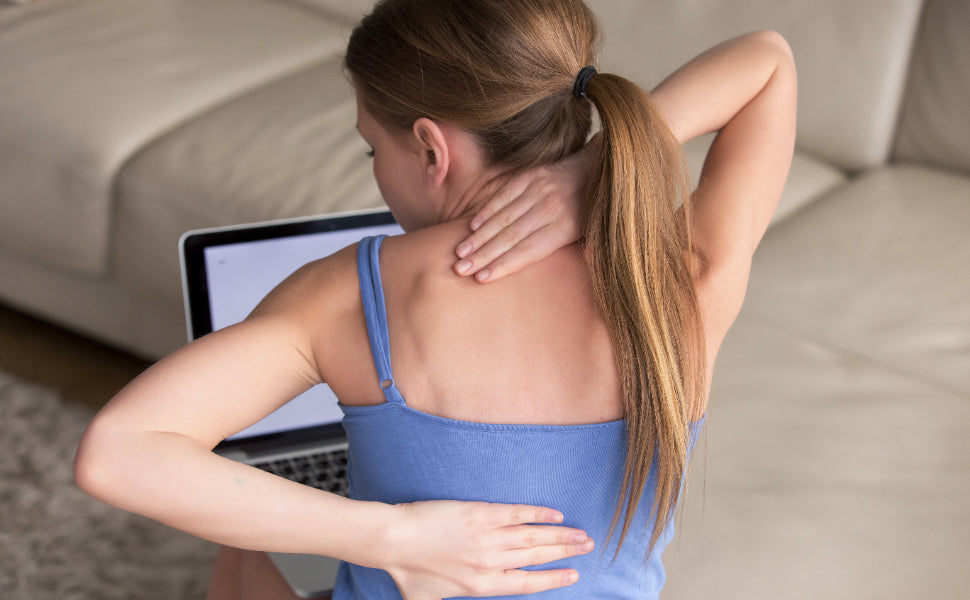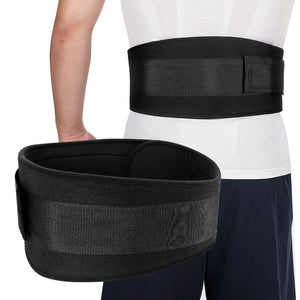How to Relieve Back Spasms?

Back spasms strike suddenly. They cause intense muscle cramping across the back that ranges from mildly uncomfortable to severely painful. Even minor motions like bending or twisting seem impossible during a spasm until relief arrives. Beyond their spontaneous onset, spasms vary between individuals in frequency and severity. While occasional mild episodes may pass within minutes, frequent or intense spasms can disrupt daily life. Therefore, those prone to back spasms need to learn how to relieve back spasms. Several techniques effectively alleviate pain and allow a return to regular activities.

Common Causes of Back Spasms
Several factors can place excessive strain on back muscles and often result in painful spasms. Identifying potential triggers provides insight regarding how to relieve back spasms and better prevent future episodes. The common causes of back spasms include:
1. Muscle Strain
Forceful or jerky lifting motions, whether on the job or in the gym, put considerable pressure on the back if good form is not maintained. They can overload the back and strain muscles and hence cause back spasms.
2. Poor Posture
Spending extended periods hunched over a desk or computer with rounded shoulders is another primary culprit. Even everyday activities like driving can be affected if good alignment is not maintained. Slouching places prolonged tension on back muscles that were not designed for such positioning.
3. Tight Hamstrings
The hamstring muscles in the back of the thighs connect to the lower pelvis. They influence lower back health and flexibility. The hamstrings can exert tension on the lower back muscles. This occurs when they become inflexible from lack of stretching. They do it in a way that induces strain and spasms over time.
4. Electrolyte Imbalances
Essential minerals like potassium and sodium really play a major role in how nerves and muscles do their thing. Getting dehydrated or not taking enough of these minerals can cause imbalances in your body’s levels. As a result, you might experience sporadic muscle cramps or ongoing spasms. This is because the back muscles lack the necessary electrolytes to function in top form.
How to Relieve Back Spasms
When crippling back spasms suddenly occur, it’s important to address the source of the painful muscle cramping to find relief. Applying a strategic combination of self-care techniques can help relieve muscle spasms, decrease discomfort, and speed the healing process. Effective strategies and techniques include:
1. Heat Therapy
Gentle application of heat from a heating pad or hot water bottle can relieve spasms. The increased blood flow to tight muscles from warmth helps relax them by dilating blood vessels. This eases spasms while also speeding up the healing of any pulled or strained tissue. However, applying heat therapy on inflamed areas is not recommended.
2. Ice Therapy
Icing the aching area of the back for 10-15 minutes a few times daily reduces inflammation. The numbing effect also temporarily alleviates pain sensations to provide soothing comfort.
3. Massage
Massaging any knots or areas of intense spasm out of the back using moderate deep-tissue pressure is effective. It can substantially relax the tightened muscles. Working out built-up lactic acid and tension accelerates recovery by boosting circulation and healing in fatigued areas. You can also self-massage with a tool like a foam roller.
 4. Adjust Posture
4. Adjust Posture
Maintaining conscious posture awareness when standing, sitting, lifting, or sleeping is also important. It can prevent further strain on the back. Avoiding slouching, slumping, or other positions that overexert already tired muscles is important for healing. Good alignment allows back muscles and intervertebral discs to fully support the weight of the upper body.
5. Stretch Hamstrings
Inflexible hamstring muscles in the back of the thighs negatively impact lower back health. Targeted static stretching routines for the hamstrings help improve flexibility. It also removes tension in that muscle group that can radiate to the back. Regular hamstring stretching through poses like down dog is recommended.
6. Strengthen Core Muscles
Gradual core-focused exercises like planks, bird dogs, and other moves help build muscular support around the spine. They protect the back over time from unnecessary stress or strain upon it. Targeted strengthening of the abdomen, obliques, and back muscles creates a stronger supportive structure for the vertebrae while improving posture alignment and balance.
7. Acupuncture
Acupuncture is another answer. This holistic back spasm treatment method involves the strategic placement of ultra-thin needles at specific pressure points. This stimulates the nervous system pathways for deep relaxation and pain relief to speed recovery. Acupuncture has been shown to effectively reduce back pain severity and disablement.
8. Wear a Back Support
For ongoing support, an adjustable elastic back brace provides valuable assistance to the aggravated area. It does so via stabilization and compression, taking pressure off muscles. The correct back brace contours to the individual curves of the lower back. In this way, it securely offloads forces that could aggravate an injury during daily activities.
Alleviate Back Spasms with Quality Back Support
How to relieve back spasms? As it’s clear from the above information, several techniques exist. A quality back support brace can provide invaluable assistance through its stabilizing frame and compression. By offloading excess strain on injured muscles and supporting the spine’s structural integrity, a back brace allows aggravated tissues time to recover their strength.
The Fivali Lower Back Brace with Infrared Heating Provide Back Pain Relief delivers targeted relief for back spasms. Designed with breathable fabrics for all-day comfort, this back brace contours close to the body for a customized fit. Wireless functionality permits convenience of use anywhere. Several features contribute to its effectiveness:
- Wireless Use and Long Battery Life
The wireless functionality of this Fivali back brace allows for all-day use without being tethered to a power source. Its powerful, long-lasting battery ensures continuous pain-relieving therapies can be enjoyed during busy and active days.
- 3 Levels of Vibration and Heating
Precise infrared heat delivery targets sore muscle areas. It allows the right amount of penetrating warmth to relax spasms deep within tissues. Meanwhile, various intensities of vibration massage away stubborn knots on the skin’s surface for added relief of tension patterns.
- Lock and Unlock Button Anti-Mistouch Function
The simple push-button controls minimize unintentional adjustments when heat or massage modes are engaged. This reliable fail-safe function delivers consistent, effective therapy without disruptions throughout wear.
- Convenient and Comfortable Size
This Fivali back brace accommodates a wide range of body shapes from small to plus sizes. Its adaptable design contours snugly yet comfortably to securely support the curves of the lower back.

Go to the Doctor if Necessary
Home remedies usually suffice for minor cases. However, if you're experiencing severe pain or if the pain becomes a constant presence that disrupts your ability to perform everyday tasks, it's crucial to consult with a medical expert. Persistent pain may be a sign of bigger problems that require professional diagnosis and treatment.
Back spasms stem from several causes that overwork the back muscles. How to relieve muscle spasms in back? There are several techniques. Adopting proper posture, stretching hamstrings, strengthening the core, and applying therapies like heat, massage, and ice are excellent self-care methods for quick relief.
For ongoing support, a quality back brace like the Fivali Lower Back Brace with Infrared Heating Provide Back Pain Relief is recommended. It safely provides structured support, targeted heating therapy, and vibration massage to alleviate back spasms. Visit our website to explore our reliable products designed to empower active lifestyles without pain barriers.
-
Posted in
Back pain causes, Brace, Pain, Recovery













